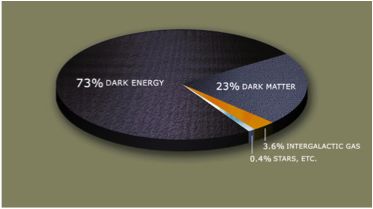Dark Energy
Dark Energy and the Universe

Revolutionary observations in the past two decades have shown that the expansion of the Universe is accelerating. Dark Energy is the proposed explanation for this acceleration. The nature of dark energy, however, remains a mystery. Alternately, the acceleration may be evidence of a breakdown in Einstein's theory of gravity on cosmic scales. In either case, the cause of the observed cosmic acceleration is one of the most fundamental questions in physics today.
Roman Space Telescope's Primary Dark Energy Science Objective is to determine the expansion history of the Universe and the growth history of its large-scale structure in order to test possible explanations of its apparent accelerating expansion including Dark Energy and modifications to Einstein's gravity (Green et al 2011). This goal will be achieved through a combination of the dedicated High Latitude Survey (HLS), which will provide four bands (Y, J, H, F184) imaging and spectroscopy (1.35 - 1.95um) over ~2000 square degrees, along with a three-tiered survey aimed at detecting SNe (see the baseline survey characteristics ). Using these data Roman Space Telescope will measure the expansion history of the Universe and the growth of large-scale structure (the clustering of galaxies and their associated halos of dark matter in the Universe) using three complementary techniques: